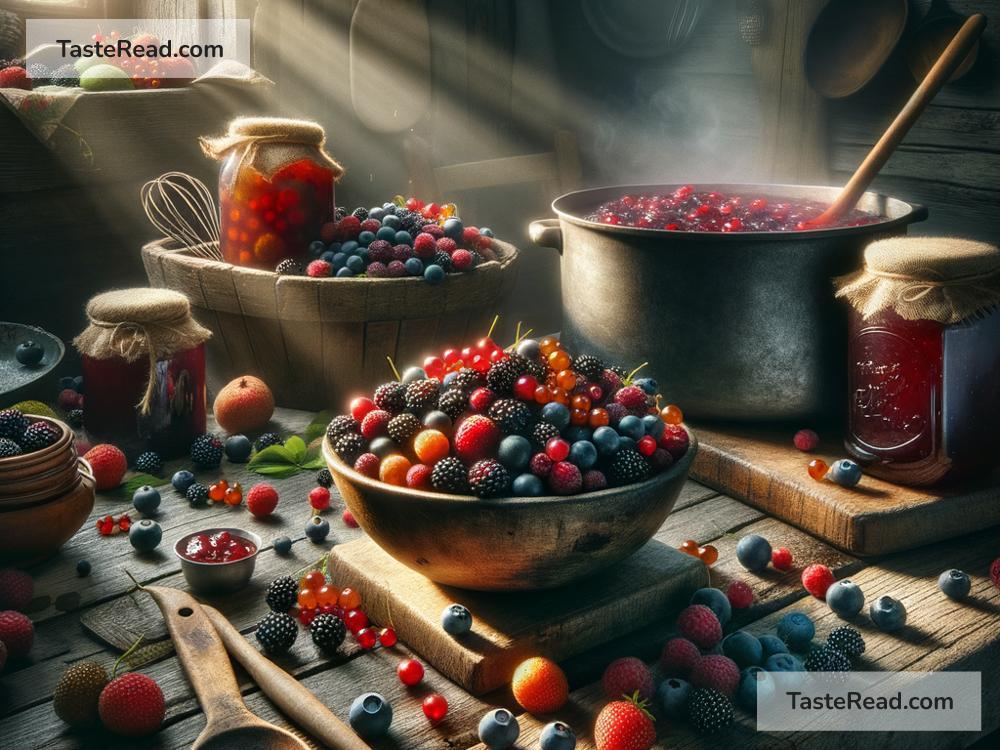Making Jam with Overripe Berries for Zero Waste
In today’s world, we are constantly looking for ways to reduce waste and make the most out of our resources. One way to do this is by turning overripe berries into delicious, homemade jam. Not only is this an excellent method to avoid wasting food, but it’s also a simple and fulfilling activity that anybody can try at home. Here’s a guide to making jam with overripe berries for a zero-waste kitchen.
Why Use Overripe Berries?
Overripe berries might not be the best for eating fresh out of the container due to their mushy texture or overly sweet taste. However, these qualities make them perfect for jam-making. The high sugar content in overripe berries acts as a natural preservative and sweetener, reducing the need for additional sugar. Plus, utilizing these berries aligns with the zero-waste philosophy, emphasizing the importance of using what we have rather than throwing it away.
Getting Started: What You Need
Before diving into the jam-making process, you’ll need a few basic items:
– Overripe berries: strawberries, raspberries, blueberries, or any mix you like.
– Sugar: even though overripe berries are sweet, a little extra sugar helps in preservation.
– Lemon juice: this adds a nice tang and helps set the jam.
– A large pot: for cooking the jam.
– Jars with lids: for storing your homemade jam.
Step by Step: Making the Jam
-
Prepare Your Berries: Start by washing your berries thoroughly. If you’re using strawberries, you might want to remove the stems and any overly mushy parts. For other berries, just picking out any debris or leaves is enough.
-
Mash ‘Em Up: In a large bowl, use a potato masher or a fork to gently mash the berries. How much you mash them depends on how chunky you like your jam. Some people prefer a smoother texture, while others enjoy chunks of fruit in their jam.
-
Cooking Time: Transfer the mashed berries into your large pot. Stir in sugar and a squeeze of lemon juice, then bring the mixture to a boil over medium heat, stirring constantly to prevent sticking or burning. Once boiling, reduce the heat and simmer. You’ll notice the mixture will start to thicken. This can take anywhere from 10 to 20 minutes depending on the type of berries and the amount you’re making.
-
Testing the Jam: To know if your jam is ready, take a small spoonful and place it on a cold plate. If it gels, it’s ready. If not, continue cooking for a few more minutes and test again.
-
Jar It Up: While your jam is still hot, carefully ladle it into your clean jars, leaving about a half-inch of space at the top. Wipe any spills off the rims with a clean cloth, then screw the lids on tightly.
-
Cool Down and Store: Allow your jars of jam to cool to room temperature. You’ll hear the lids pop as they seal completely. Once cool, label your jars with the date and store them in a cool, dark place. Refrigerate after opening.
Enjoying Your Jam
This homemade jam is versatile and can be enjoyed in numerous ways. Spread it on toast, swirl it into yogurt, dollop it on pancakes, or even use it as a base for a salad dressing. The possibilities are endless.
Benefits of Making Your Own Jam
Making jam with overripe berries is more than just a fun kitchen project. It’s a step towards sustainable living. By doing so, you reduce food waste, control the ingredients thus avoiding preservatives and excessive sugar often found in commercial jams, and ultimately save money. It’s a small gesture with a big impact on both your health and the environment.
Final Thoughts
Turning overripe berries into jam is a wonderful way to embody the zero-waste lifestyle. It’s easy, practical, and delicious. This activity not only gives a second life to fruit that would otherwise be discarded but also provides a sense of accomplishment and a deeper appreciation for the food we often take for granted. So, the next time you find yourself with a batch of overripe berries, consider transforming them into a sweet, homemade jam – it’s a small step towards a more sustainable world.


